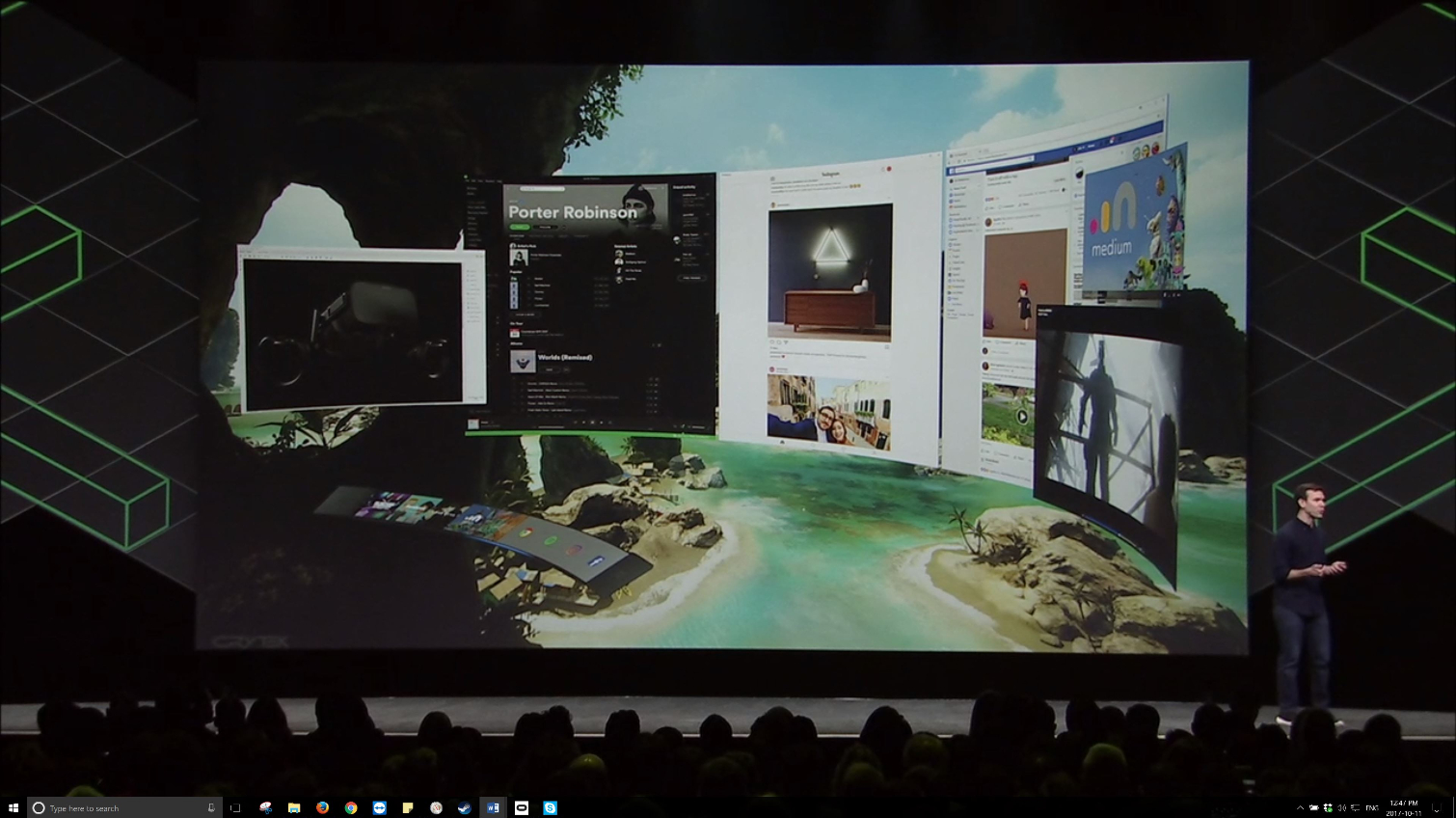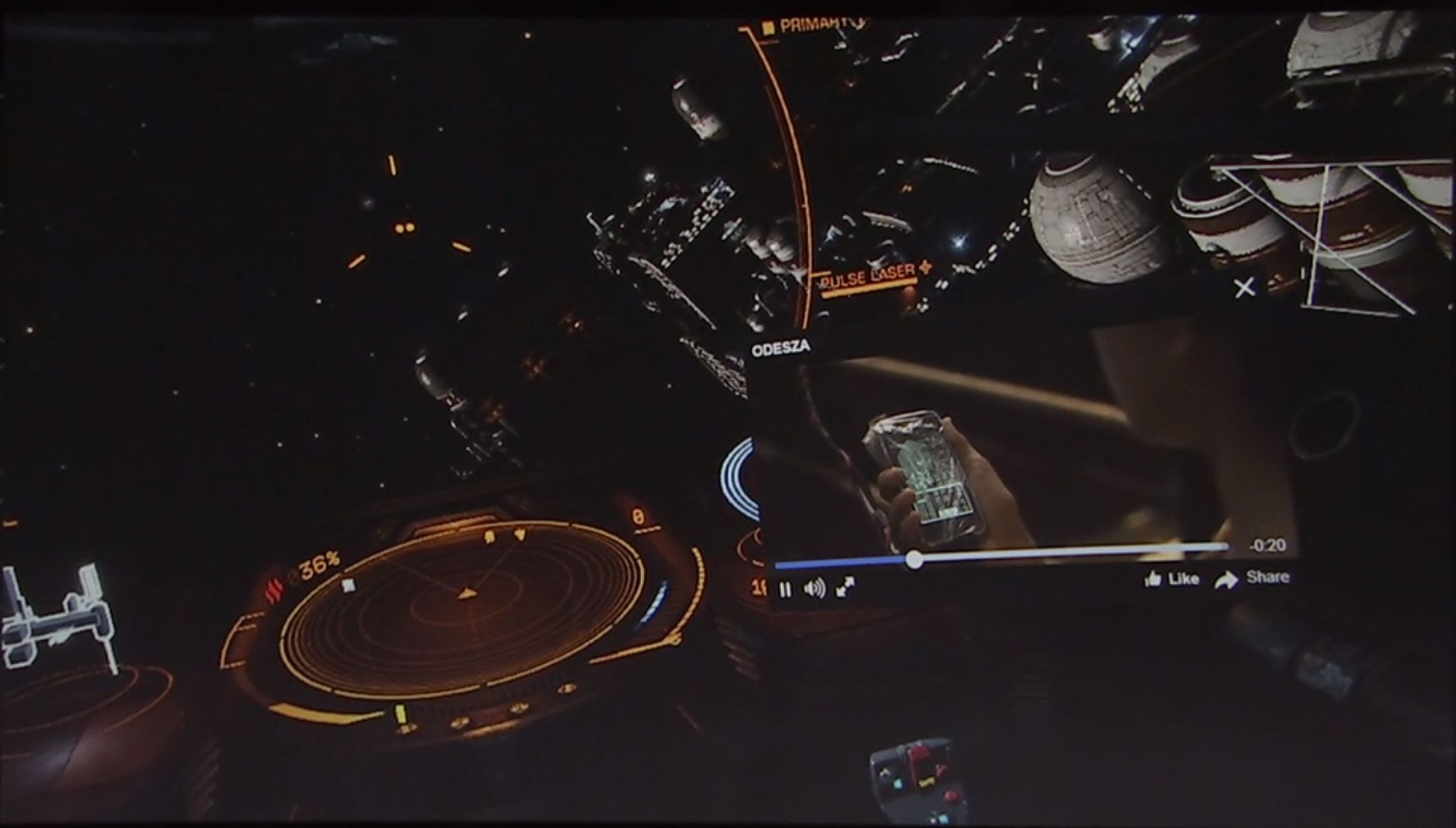Oculus Rift Core 2.0: New UI, Customizable Home, Desktop Access
Not everything at this year’s Oculus Connect 4 is new VR hardware. The company also announced Rift Core 2.0, a rework of the Rift software. Rift Core 2.0 seems to just be a moniker for the user experience elements, and today's announcements include Dash and a new Oculus Home.
Dash is a central UI for accessing all of your Rift menus--a command center designed for use with Touch controllers rather than a gamepad. Dash runs as an overlay, letting you multitask within VR, switching between apps, games, and connecting with other users.
One of the most compelling parts of Dash will be the ability to access any desktop application within the VR environment. You can essentially pause your VR game, for example, and then open, overlay, and pin the desktop experience. Each of these applications, including the desktop, have their own virtual displays inside VR, and you can pin them anywhere in the field of view and resize them. The idea that you'd spend all of your time--including productivity tasks--behind an HMD may seem a bit far-fetched for some people, but Oculus talks about VR as the ultimate display replacement some day. For now, the ability to multitask outside of pure VR entertainment will offer the chance to test the company's theories here.







Oculus claims these are more than physical mirrors, and that the applications will have access to other features of the Oculus Runtime, including technology like Asynchronous Space Warp. The company has worked with Nvidia and AMD on this, according to Nate Mitchell, Head of Oculus Rift. The company is actually using Dash to debug Dash. Mitchell said that because Dash is built using the company's UI framework (React VR), it will eventually be accessible to developers for adding new ideas.
Oculus has also reworked Home as part of Rift Core 2.0. Mitchell said that the biggest customer request was the ability to customize your Home space. The company has provided a variety of items for users to do this--various furniture, toys, works of art to play around with. You can use Touch to place these objects around the room. There are some neat little ideas here, like game achievements to place on your virtual wall, virtual game cartridges to place into a virtual console to start a new game.
You can visit the Home spaces of other users, and they can visit yours. At some point in the future, the company will also let users create shared spaces.
These new Rift Core 2.0 experiences will be in beta in December, and will come as a free update.
Get Tom's Hardware's best news and in-depth reviews, straight to your inbox.
-
chicofehr vr is great if you have your own yard. set it up outside on the grass. lots of room outside. I might try that next summer when I hope I can buy one.Reply -
Opus Krokus The biggest problem I see with this is the fact that you can't tell when someone approaches you in the real world. There needs to be some way to know when someone walks up - some kind of external camera interface probably.Reply

